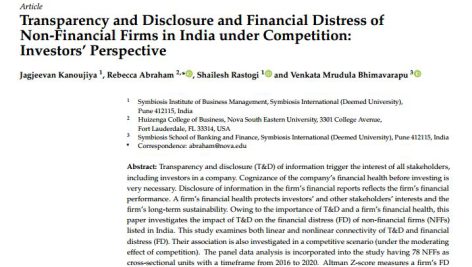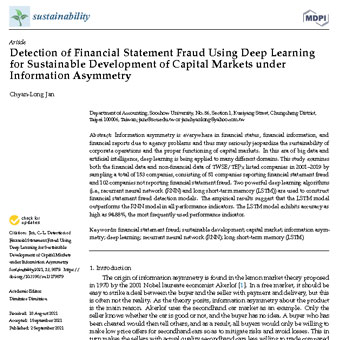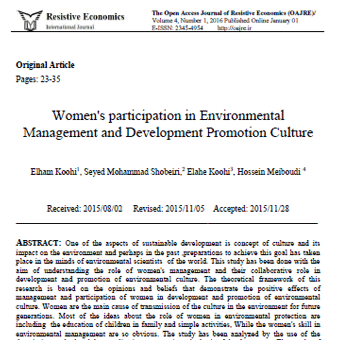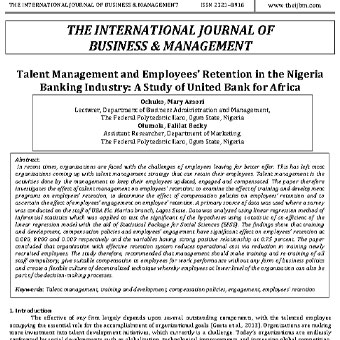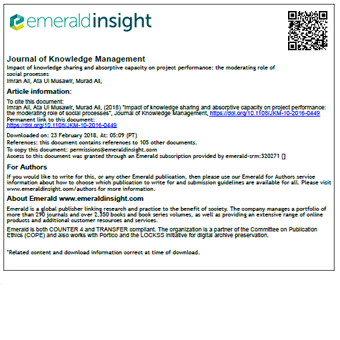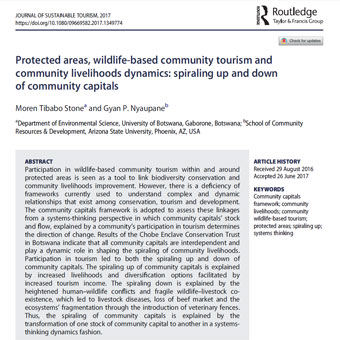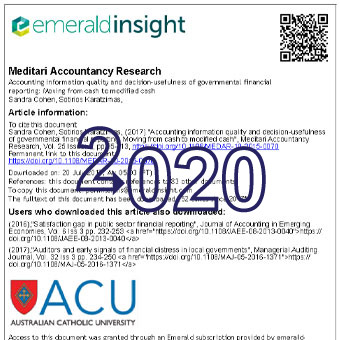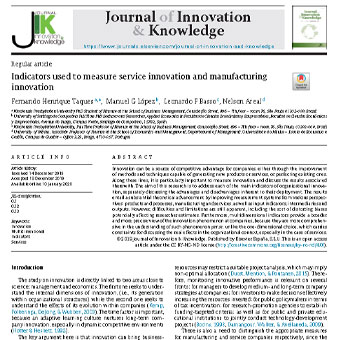عنوان فارسی مقاله:شفافیت و افشا و بحران مالی شرکت های غیر مالی رقابتی در هند: دیدگاه سرمایه گذاران
شفافیت و افشای اطلاعات (T&D) باعث تحریک منافع همه سهامداران، از جمله سرمایه گذاران در یک شرکت میشود. آگاهی از سلامت مالی شرکت قبل از سرمایه گذاری بسیار ضروری است. افشای اطلاعات در گزارشهای مالی شرکت نشان دهنده عملکرد مالی شرکت است. سلامت مالی یک شرکت از منافع سرمایه گذاران و سایر ذینفعان و پایداری بلندمدت شرکت محافظت میکند. با توجه به اهمیت T&D و سلامت مالی یک شرکت، این مقاله تأثیر T&D را بر بحران مالی (FD) شرکتهای غیر مالی (NFFs) پذیرفته شده در هند بررسی میکند. این مطالعه ارتباط خطی و غیرخطی T&D و بحران (درماندگی) مالی (FD) را بررسی میکند. ارتباط آنها نیز در یک سناریوی رقابتی (تحت اثر تعدیل کننده رقابت) بررسی میشود. تجزیه و تحلیل دادههای پانلی در این مطالعه گنجانده شده است که دارای ۷۸ NFF به عنوان واحدهای مقطعی با بازه زمانی ۲۰۱۶ تا ۲۰۲۰ است. امتیاز Z Altman بحران مالی شرکت را اندازهگیری میکند (امتیاز Z بالاتر به معنای بحران مالی پایین است). امتیازات BOS(Berger, Ofek و Swary) شاخصهای T&D و Lerner برای ارزیابی سطح T&D و رقابت استفاده میشود. یافتهها نشان میدهد که سطح T&D بالاتر، ثبات مالی شرکت را کاهش میدهد یا FD شرکت را افزایش میدهد. در همبستگی غیرخطی، مشخص شد که T&D یک ارتباط منحنی U معکوس با ثبات مالی یا ارتباط منحنی U با FD دارد. این نشان میدهد که در ابتدا، T&D بالاتر، FD را کاهش میدهد و پس از یک آستانه، FD را افزایش میدهد. با این حال، تحت رقابت، T&D به طور معنی داری برای FD تأثیرگذار نیست. این مطالعه جدید است زیرا هیچ مطالعه قبلی بر روی چنین ارتباطی تحت رقابت و در نظر گرفتن دیدگاه سرمایه گذاران از FD یک شرکت متمرکز نشده است.
- لینک دانلود فایل بلافاصله بعد از پرداخت وجه به نمایش در خواهد آمد.
- همچنین لینک دانلود به ایمیل شما ارسال خواهد شد به همین دلیل ایمیل خود را به دقت وارد نمایید.
- ممکن است ایمیل ارسالی به پوشه اسپم یا Bulk ایمیل شما ارسال شده باشد.
- در صورتی که به هر دلیلی موفق به دانلود فایل مورد نظر نشدید با ما تماس بگیرید.
 متن به فارسی | ترجمه مقالات و متون علمی | ترجمه و دانلود مقالات و انواع متون علمی و ادبی و پذیرش سفارش ترجمه
متن به فارسی | ترجمه مقالات و متون علمی | ترجمه و دانلود مقالات و انواع متون علمی و ادبی و پذیرش سفارش ترجمه
